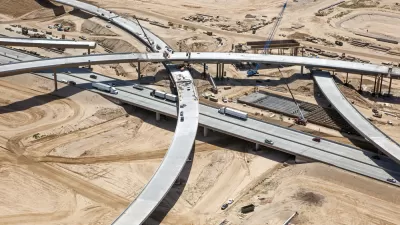Already a common means of delivering infrastructure in many countries, public-private partnerships are growing in importance in the United States, but how do they compare to other procurement models?

Outside of specialist circles, however, most people know little about public-private partnerships (P3s). This month, Doggerel features a series of conversations with members of our advisory team exploring the basic concepts behind P3s. In this third installment, Arup transaction advice specialists Alfonso Mendez, Roberto Sierra, and Jorge Valenzuela discuss how P3s compare to other project delivery models.
Can you give an overview of the differences between P3s and other common models?
Mendez: In the US, most infrastructure projects use design-build (DB) or design-bid-build (DBB) delivery methods, where you basically hire somebody to build a project for you and then they hand it back to you when it’s completed. In both cases the owner makes periodic progress payments, typically monthly.
With a P3, on the other hand, the company designs and builds the project, but they’re also in charge of financing it, keeping it up, and operating it for the next 30 to 40 years, until they give it back to the owner on the date specified in the contract and under certain conditions. That means all the additional capital investments that are required during that time will be in their court. The owner will only make payments, if any were agreed to in the contract, upon project completion. If it’s a revenue-generating P3 deal, such as a toll road, the private investment is instead paid back by the project’s revenues.
FULL STORY: P3 101: Comparing infrastructure procurement models

Alabama: Trump Terminates Settlements for Black Communities Harmed By Raw Sewage
Trump deemed the landmark civil rights agreement “illegal DEI and environmental justice policy.”

Study: Maui’s Plan to Convert Vacation Rentals to Long-Term Housing Could Cause Nearly $1 Billion Economic Loss
The plan would reduce visitor accommodation by 25% resulting in 1,900 jobs lost.

Planetizen Federal Action Tracker
A weekly monitor of how Trump’s orders and actions are impacting planners and planning in America.

Restoring Northern India’s Himalayan ‘Water Temples’
Thousands of centuries-old buildings protect the region’s natural springs and serve as community wells and gathering places.

Milwaukee to Double Bike Share Stations
Bublr Bikes, one of the nation’s most successful, will add 500 new e-bikes to its system.

DC Extends Application Window for Outdoor Dining Permits
District restaurants will have until the end of November to apply, but businesses with permits in rush hour parking lanes must end operations on July 31.
Urban Design for Planners 1: Software Tools
This six-course series explores essential urban design concepts using open source software and equips planners with the tools they need to participate fully in the urban design process.
Planning for Universal Design
Learn the tools for implementing Universal Design in planning regulations.
Caltrans
Smith Gee Studio
Institute for Housing and Urban Development Studies (IHS)
City of Grandview
Harvard GSD Executive Education
Toledo-Lucas County Plan Commissions
Salt Lake City
NYU Wagner Graduate School of Public Service




























